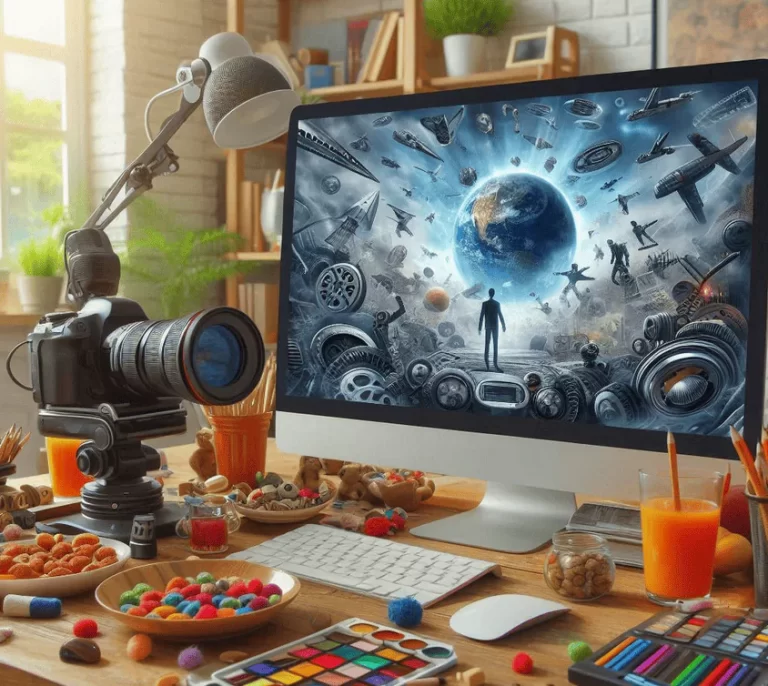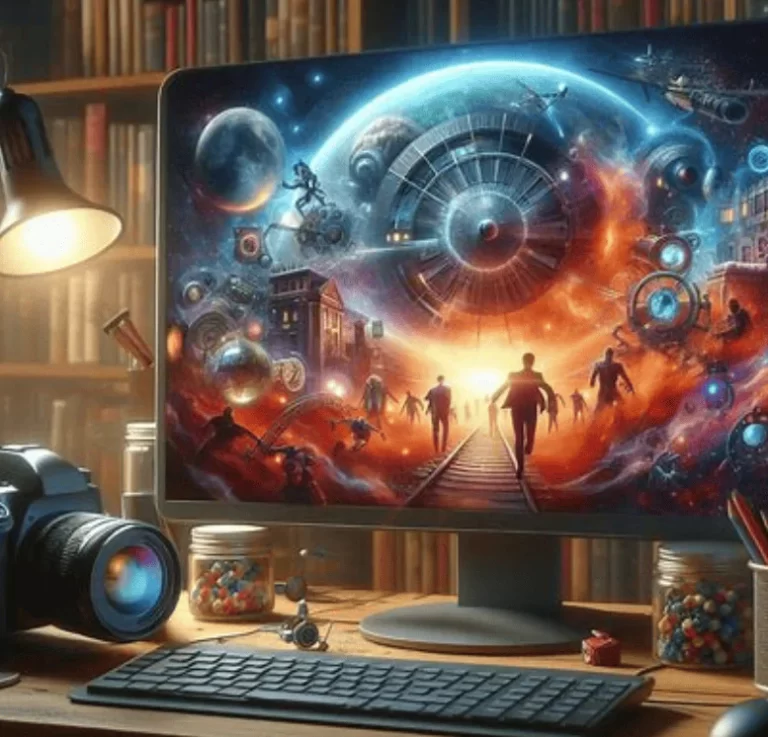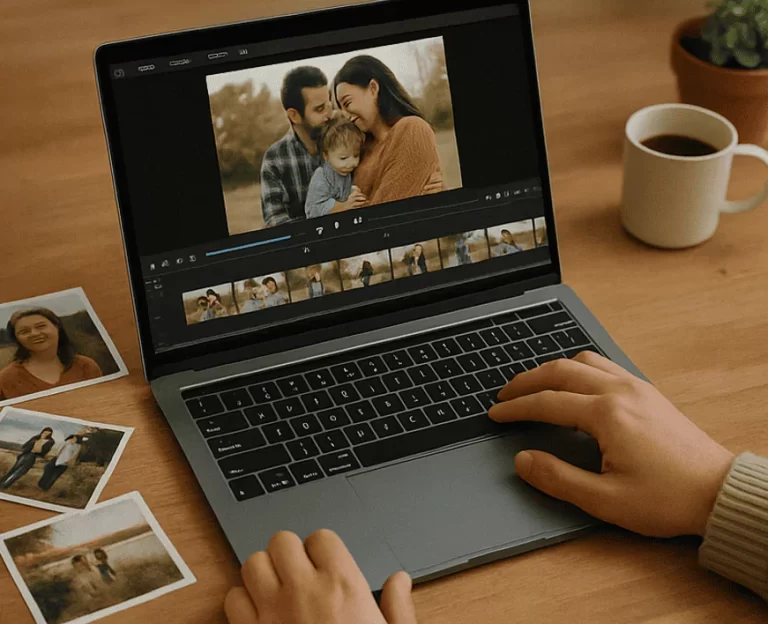
Digital Art In the vast and ever-evolving landscape of modern art, the rise of Digital Art has been nothing short of transformative. With the fusion of creativity and technology, the boundaries of traditional art forms have expanded, giving rise to new mediums, techniques, and possibilities for artists to explore. The Digital Art world has given birth to innovative works that transcend the limitations of the physical world. Central to this revolution is the concept of the virtual gallery—a digital space that allows artists to showcase their works to a global audience. In this article, we will explore the significance of the virtual gallery, its impact on the Digital Art scene, and how it is shaping the future of art curation and appreciation.
The Emergence of Digital Art
To fully understand the importance of the virtual gallery, it is essential to delve into the evolution of Digital Art itself. At its core, Digital Art refers to artwork that is created using digital technology. This can range from digital paintings, illustrations, and graphics to more immersive experiences like virtual reality (VR) art or algorithm-generated pieces. What distinguishes Digital Art from traditional art is not only the medium but also the way it can be created, shared, and experienced.
The earliest forms of Digital Art began in the mid-20th century with the development of computers. Early pioneers such as Frieder Nake and Harold Cohen explored algorithmic art and computer-generated images. These works were simple by today’s standards, but they laid the foundation for the expansive world of Digital Art that we see today.
Fast forward to the present, and Digital Art has evolved into a dynamic and diverse field. With the advent of more sophisticated software and tools, artists can now create highly detailed, photorealistic images, intricate digital sculptures, and even entirely new forms of interactive art. What’s more, digital tools allow for a level of precision and flexibility that traditional mediums simply cannot replicate. The shift towards digital platforms has made it possible for artists to experiment with new styles and concepts that were once inconceivable in the physical realm.
The Rise of the Virtual Gallery
In parallel with the growth of Digital Art, the concept of the virtual gallery has also emerged as a crucial aspect of the art world. Traditionally, art exhibitions and galleries have been physical spaces where artists present their work to the public. These venues offer artists the opportunity to connect with potential buyers, critics, and fellow creatives. However, the digital age has transformed this model, giving rise to virtual galleries—spaces that exist entirely online, allowing artists to exhibit their Digital Art to a global audience without the constraints of geographical limitations.
The virtual gallery is a reflection of the democratization of art. No longer are artists bound by the physical constraints of brick-and-mortar galleries or museums. A Digital Art exhibit can be set up in a matter of hours and shared with millions of people across the world. This new platform opens the doors to a broader range of artists, including those who may not have the resources or connections to showcase their work in traditional venues. Furthermore, virtual galleries provide artists with the ability to curate their exhibitions in innovative ways, creating interactive experiences that are not possible in the physical world.
The growth of the virtual gallery has been accelerated by the rise of social media platforms and digital marketplaces like Instagram, DeviantArt, and Etsy, where artists can share their work with a wider audience. However, specialized virtual galleries have taken this a step further by creating fully immersive digital environments where visitors can explore art in a three-dimensional space. These virtual galleries often incorporate elements such as interactive features, animated displays, and even virtual reality, creating a dynamic and engaging experience for the viewer.
The Role of Virtual Galleries in Showcasing Digital Art
One of the primary functions of the virtual gallery is to provide a platform for showcasing Digital Art in a way that enhances its unique characteristics. Unlike traditional art forms, Digital Art exists in a realm where dimensions, interactivity, and engagement with the viewer can all be manipulated in real-time. Virtual galleries allow for a more immersive and multifaceted presentation of art, where the audience can engage with the work in ways that would not be possible in the physical world.
For example, in a traditional gallery, a painting is often viewed from a fixed perspective. The viewer can approach it from different angles, but the physical constraints of the space limit the way they can interact with it. In a virtual gallery, however, the viewer can move around the art piece, zoom in for a closer look, or even interact with the piece itself. This level of engagement allows for a deeper connection with the artwork, as the viewer is no longer a passive observer but an active participant in the experience.
In addition to interactivity, virtual galleries also offer artists the opportunity to present their work in a variety of formats. Digital Art can take many forms—ranging from static images and video art to dynamic, moving graphics and immersive virtual environments. Virtual galleries allow for the seamless integration of these diverse formats, enabling artists to present their works in the most effective way possible.
Furthermore, the virtual gallery has the potential to create a global community of art lovers, critics, and collectors. By eliminating the need for physical space, virtual galleries make it possible for artists to reach an international audience. Visitors can explore exhibitions from anywhere in the world, and artists can connect with viewers and buyers from diverse cultural backgrounds. The virtual gallery fosters a sense of inclusivity and accessibility, as it allows for a more diverse range of voices and perspectives to be heard.
Virtual Reality and Augmented Reality: The Future of Digital Art Galleries
As technology continues to evolve, so too does the potential of the virtual gallery. One of the most exciting developments in this realm is the integration of virtual reality (VR) and augmented reality (AR) technologies, which are revolutionizing how Digital Art is experienced. These technologies have the ability to transport the viewer into fully immersive environments, offering a level of interactivity and engagement that goes far beyond what traditional galleries can provide.
In a VR-powered virtual gallery, viewers can enter a completely immersive 3D space where they can experience art in ways that feel tangible and real. They can walk through virtual halls, view art from any angle, and even interact with the environment. For example, an artist could create a VR experience where the viewer is surrounded by a digital landscape that responds to their movements or actions, creating an entirely unique experience for each person. This type of immersive art experience would be impossible to replicate in a physical space, making the virtual gallery an invaluable tool for artists working in VR.
Similarly, augmented reality (AR) allows artists to superimpose digital elements onto the physical world, creating hybrid experiences that blend the virtual and the real. AR-enabled virtual galleries could allow viewers to see Digital Art overlaid onto the walls of their homes or in outdoor environments. By using their smartphones or AR glasses, viewers could experience art in a new, interactive way that combines the digital with the physical world.
The combination of VR and AR with Digital Art is poised to change the way we engage with art forever. These technologies offer a level of immersion and personalization that traditional galleries simply cannot provide. In the future, we may see virtual galleries that offer tailored experiences based on the viewer’s preferences, interests, and even emotional responses. The integration of AI and machine learning could also enable virtual galleries to dynamically adjust the artwork or display based on the viewer’s reactions, further enhancing the immersive experience.
The Role of Blockchain and NFTs in Virtual Galleries
Another significant development in the world of Digital Art and virtual galleries is the rise of blockchain technology and non-fungible tokens (NFTs). NFTs have become a revolutionary way for artists to sell and authenticate their digital works. These tokens are unique digital assets that represent ownership of a specific piece of Digital Art. By using blockchain technology, NFTs ensure that the ownership and provenance of digital art can be verified, providing a level of security and transparency that was previously lacking in the digital art market.
Virtual galleries are increasingly integrating NFTs into their platforms, allowing artists to sell their digital works as unique, verified assets. This has opened up new revenue streams for artists and has provided collectors with a way to purchase exclusive pieces of Digital Art with the assurance of authenticity. Furthermore, the use of NFTs in virtual galleries has the potential to disrupt the traditional art market, as it allows digital works to be bought, sold, and traded in a way that was not possible before.
NFTs have also enabled new forms of art ownership, where collectors can purchase and display digital works in virtual galleries, but without the need for physical space. This has led to the rise of digital collections and online exhibitions, where artists can showcase their works to an international audience while retaining control over their intellectual property.
The Global Impact of Virtual Galleries on Digital Art
The rise of virtual galleries has had a profound impact on the global Digital Art scene. With the ability to showcase art to a worldwide audience, artists are no longer limited by geographical boundaries. The virtual gallery has created a truly global art community, where artists from all corners of the globe can share their work and connect with others.
For collectors and art enthusiasts, the virtual gallery offers the opportunity to explore and acquire works from emerging artists who may not have had the chance to exhibit their work in traditional galleries. Virtual galleries have democratized the art world, providing a platform for underrepresented voices and enabling more diverse forms of artistic expression to flourish.
Moreover, the virtual gallery has the potential to bridge cultural divides, offering a space where artists from different backgrounds can share their stories, perspectives, and artistic practices. This global exchange has enriched the art world, creating a more inclusive and diverse art ecosystem.



